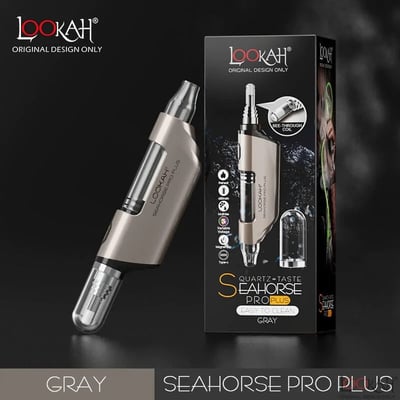views

The Technical Function of Coils in Vape Pens
At the core of any vape pen lies its heating element, commonly referred to as the coil. The coil is a small wire or mesh component that heats up when electrical current passes through it, vaporizing the cannabis concentrate or e-liquid contained within the device. This process transforms the material into an inhalable vapor without combustion, preserving the active compounds and providing a smoother experience.
Why Coils Are Consumable
Coils are inherently consumable due to the nature of their operation and constant exposure to heat and residue. Several factors contribute to the gradual degradation of coils:
-
Thermal Stress: Repeated heating and cooling cycles cause the coil material to expand and contract, eventually leading to metal fatigue and reduced heating efficiency.
-
Residue Buildup: Cannabis concentrates especially wax and oils leave behind residues that accumulate on the coil surface. This buildup impedes heat transfer and alters flavor profiles, necessitating replacement to maintain optimal performance.
-
Material Degradation: The coil wire and wicking material (often cotton or ceramic) degrade over time due to exposure to heat and chemical compounds in the concentrate, reducing vapor quality and potentially causing unpleasant tastes.
-
Electrical Wear: Continuous electrical current can cause oxidation or corrosion of the coil material, impacting conductivity and heating consistency.
Coil Materials and Their Impact
Experienced users understand that the choice of coil material significantly affects vapor quality and coil longevity. Common materials include Kanthal, stainless steel, nickel and ceramic. Each offers distinct thermal properties and durability characteristics:
-
Kanthal: Known for durability and stable resistance but slower to heat, often used in traditional vape pens.
-
Stainless Steel: Offers quick heating and versatility for temperature control modes, favored for flavor purity.
-
Nickel: Used primarily in temperature control devices but requires careful handling due to potential health concerns.
-
Ceramic: Not a metal coil but a heating element that provides even heat distribution and longer lifespan, increasingly popular in wax pens and dab pens.
Comparing Vape Pens Wax Pens and Dab Pens
While vape pens traditionally vaporize e-liquids or thin oils, wax pens and dab pens cater specifically to concentrates with thicker viscosities such as wax, shatter and live resin. The coil design and maintenance requirements vary accordingly.
Vape Pens
are optimized for thinner cannabis oils and e-liquids. Their coils are designed for rapid heating and are often smaller to fit compact devices. The coil’s lifespan depends heavily on the viscosity of the oil and user habits such as temperature settings and frequency of use.
Wax Pens
require coils or heating elements that can handle thicker concentrates. Ceramic coils are favored here for their ability to evenly distribute heat and resist residue buildup. The consumable nature of coils remains, but wax pens often demand more frequent maintenance due to the sticky nature of wax.
Dab Pens
represent a hybrid category combining features of vape pens and traditional dab rigs. They use advanced coils or ceramic heating elements capable of precise temperature control to vaporize a range of concentrates. The coil’s performance directly impacts flavor fidelity and vapor density, making regular replacement or cleaning essential for experienced users.
Maintenance Strategies for Coil Longevity
For veteran cannabis consumers, maximizing coil lifespan while preserving vapor quality is a key consideration. Here are professional tips to extend coil usability:
-
Proper Temperature Management: Avoiding excessively high temperatures reduces thermal stress and residue carbonization. Many modern vape pens feature adjustable temperature controls to facilitate this.
-
Regular Cleaning: Periodic cleaning of coils with isopropyl alcohol or specialized cleaning solutions helps remove residue buildup without damaging the coil material.
-
Use of High-Quality Concentrates: Purity and consistency of cannabis concentrates influence coil degradation. Impurities and additives accelerate residue formation.
-
Avoid Dry Hits: Ensuring the coil is sufficiently saturated before activation prevents burning the wick or coil, which drastically shortens coil life.
The Impact of Coil Quality on User Experience
Experienced users recognize that coil condition directly affects vapor production flavor and overall satisfaction. A fresh coil delivers clean flavorful vapor with optimal density and smoothness. Conversely, a worn or dirty coil produces harsh tastes diminished terpene profiles and inconsistent vapor output.
Investing in high-quality coils compatible with the device model is essential. Many manufacturers including Lookah offer OEM replacement coils designed for their vape pens wax pens and dab pens to ensure performance consistency.
Future Trends: Innovations in Coil Technology
The cannabis vaporization industry continues to innovate coil design and materials to address traditional limitations. Emerging technologies include:
-
Mesh Coils: Featuring larger surface areas for faster heating and better vapor production.
-
Ceramic-Coated Coils: Combining metal durability with ceramic’s heat distribution benefits.
-
Self-Cleaning Coils: Experimental designs aiming to reduce residue buildup and extend coil life.
-
Modular Coil Systems: Allowing users to easily swap coils with different materials or resistances to customize their experience.
Such advancements promise to enhance the efficiency and versatility of vape pens and related devices, benefiting experienced users seeking refined control over their sessions.
Conclusion
For seasoned cannabis consumers, the role of coils in vape pens transcends mere functionality; it is a critical factor shaping the quality safety and consistency of their vaporization experience. Coils are consumable components due to the physical and chemical stresses inherent in heating cannabis concentrates. Understanding coil materials maintenance and replacement strategies empowers users to optimize device performance and extend longevity.










